After our scenic relocation from the Asheville area, we immediately dove into the activities available in the Winston-Salem area. The city is probably best known as the home of the R.J. Reynolds Tobacco Company, particularly thanks to the Winston and Salem cigarette brands, and there’s no question that RJR had a defining influence on the city. But I’m (probably) going to talk about that in a later post. For now, let’s go back a little further and start with…
Moravian Origins of Salem
European settlement of the Winston-Salem area began with a group of missionaries from what is now known as the Moravian Church. This Christian sect originated with the followers of Jan Hus, a Czech theologian who was burned at the stake in 1415 for having revolutionary ideas like holding mass in the vernacular language, allowing priests to marry, and ending the sale of indulgences. Predating Martin Luther by over 100 years, Hus and his followers are considered by some to be the first Protestants. After a long history of persecution in Bohemia, in 1722 a group of Moravians relocated to Saxony in eastern Germany and reestablished the church. They soon were sending missionaries around the world and establishing communities in distant lands. Bethlehem, Pennsylvania was founded by Moravians in 1741 and grew quickly.
Seeing this, John Carteret, and Englishman who was the Earl of Granville and also the owner of 1/8 of the Carolina Colony, offered to sell a tract of 100,000 acres to the Moravian Church to encourage settlement of his lands. A group of church leaders traveled through the Granville District in search of suitable land and, in 1753, purchased 98,985 acres which they named Wachovia. Several early settlements sprang up in the northern part of the tract in the 1750s, but the long term plan was always to build a central town. In 1765 the site for Salem (from “shalom” – peace in Hebrew) was selected and construction of town buildings began in 1766.
Salem soon became a significant regional commercial center, famous for its manufacture of finished goods ranging from pottery and guns to furniture and musical instruments. I am far from being qualified to explain the finer points of Moravian theology, but their religious ideas are reflected in the planning and architecture of the Salem community. Single men, single women, and other groups of similarly-situated people each lived communally in large dormitory-like buildings. The Moravian focus on universal education resulted in the 1772 founding of Salem Academy (now called Salem Academy and College), the oldest continuously operating women’s school in America. The Moravian commitment to equality before God led to an unusual type of cemetery: at God’s Acre, congregation members are laid to rest in the order in which they die (not in family groups) with completely uniform headstones. Yet despite having relatively progressive views about gender and equality, Moravians accepted chattel slavery and the church even owned enslaved people, providing them with separate facilities for worship and burial.
The reason I can show you photos of all this today has to do with the unusual development trajectory of the area. All property in Salem was owned by the Moravian church until the middle of the 19th century, and only congregation members were permitted to live in the town. The need to accommodate non-members led the church to sell a tract of land north of Salem for the construction of a new city, Winston, in 1859 to serve as the administrative center of the newly-established Forsyth County. Business activity like the aforementioned RJR Tobacco (founded in 1875) soon had Winston eclipsing Salem. The historic structures in Salem were falling into disrepair by the middle of the 20th century, and in 1950 the non-profit Old Salem, Inc. was formed. The Old Salem Historic District was declared a National Historic Landmark in 1966, and today the area is filled with properties that have been restored to their circa 1830 appearance. Many are private residences, but several buildings also house living history exhibits under the brand Old Salem Museums and Gardens.
We don’t generally partake of living history attractions, but we did make a point of visiting the excellent Museum of Early Southern Decorative Arts (MESDA) located within Old Salem, which covers materials created in states ranging from Maryland to Georgia and west to Kentucky and Tennessee. The extensive collection includes furniture, ceramics, silver and other metalwork, textiles, paintings, drawings, prints, and even architectural materials salvaged from historic buildings. Most of the museum’s collection is maintained for archival and research purposes, but the small amount on display in the masterworks galleries includes priceless objects from the earliest European settlement of the South. For example, the “court cupboard” on the far right in the photo below was manufactured in Jamestown, Virginia circa 1650 and is believed to be the earliest surviving piece of furniture made in the South.
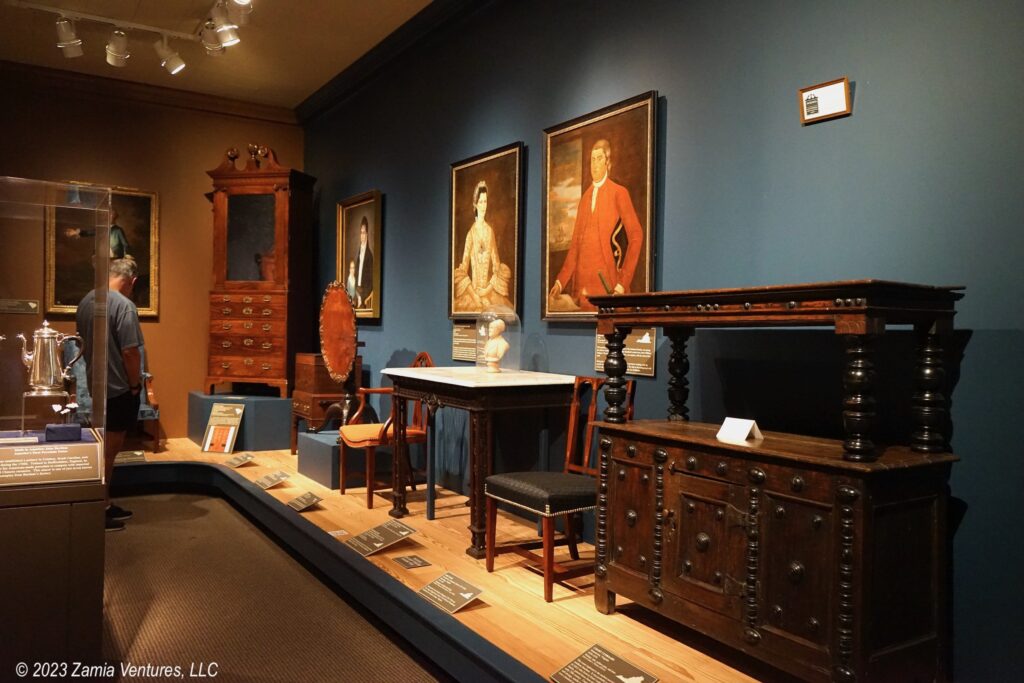
In addition to the galleries focused broadly on the American South, MESDA also has an excellent gallery devoted specifically to works from the early history of Salem, like the ornate tile stove on the left below. The use of tile stoves in Salem reflects the German background of the early Moravian settlers, in contrast to the open hearths typically used by settlers of English descent.
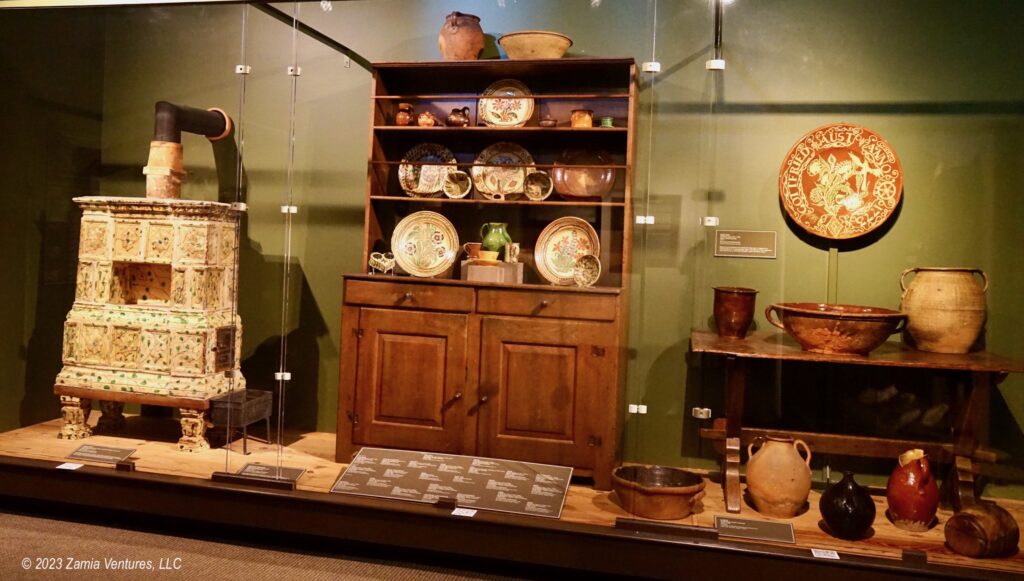
And this seems like a good time to discuss….
Our Rental
The very cool place that we rented is closely connected with the history of Salem. In fact, it was once the town hall! Salem’s first town hall was converted into a railway depot in hopes of achieving the very significant boost that often came with rail connection, and our building was built in 1912 as a replacement town hall. However, after just six months in service the cities of Winston and Salem joined forces and became Winston-Salem, with municipal meetings held at the Winston city hall. This building then functioned as a fire station until the 1980s, before it was sold as surplus and creatively converted to host offices on the ground floor with residential units above.
The building is located just a block north of Old Salem, giving us easy pedestrian access to a charming and leafy neighborhood with unique character, as well as the excellent Strollway and the Salem Creek Greenway. We are also situated on the southern fringe of the Winston downtown core, with a well-designed pedestrian overpass giving us perfect access to the downtown area. Plus, there are at least three coffee shops within a three-block radius, including the lovely Camino Bakery. We found the space to be exactly as represented in the Air BnB listing. We don’t need the second bedroom, but the location and fun building were too good to pass up. We’re still getting used to urban “features” like street lights and historic “features” like squeaky floors, but so far the place is serving as a great home base to enjoy city amenities like…
Live Sports!
One of our great interests is live sports — we basically can’t live without ESPN — and watching live sports in person in even better. So you can be sure that when I realized that our stay in Winston-Salem coincided with several sporting events, we made plans to attend.
Our first event was spending a day watching golf while wandering the course of the Wyndham Championship PGA tournament in nearby Greensboro. We enjoy watching professional golf on television, and in my (limited) experience, watching golf in person really adds to the experience. Watching TV, with the benefit of powerful zoom lenses, one might think, “Why can’t any of the players land their shots onto that enormous green?” In person, however, we see that the green is merely a pinpoint in the distance as seen from the tee box, and getting anywhere close to it is a major accomplishment.
Seeing the course in person also gives a sense of terrain that isn’t captured on broadcasts. The 2D medium of photography flattens much of the contour of the course, but walking the course provides a completely different sense of the major role that the undulating terrain plays at Sedgefield Country Club, which is a classic course designed by major golf figure Donald Ross. This was the first golf tournament we’ve attended in person since the 2020 Honda Classic, and the significance of the elevation changes on every hole was a marked contrast to tournaments we attended while living in South Florida.
Unfortunately on the day we visited the weather alternated between mist and rain, making for a cool but soggy experience. But we have decent rain gear and, properly suited up in rain jackets and water proof hiking boots, still enjoyed ourselves immensely. I really do not understand the thinking of people who showed up in regular golf gear (golf shirt, shorts, sneakers) and spent the day soaked to the skin. The true masters of conquering the elements, however, were the camera operators; those people work in all kinds of weather and it showed in their head-to-toe rain gear. We ended up walking the majority of the course and enjoyed seeing scores of professional golfers plying their trade. But since golf is a relatively slow-paced game, we also had ample time to appreciate the spectacular homes that line the course.
Our second round of watching sports we don’t actually play involved checking out some of the bicycle racing action at the annual Gears and Guitars event sponsored by the Winston-Salem Cycling Club. We’ve seen plenty of bike racing as part of triathlons like the Ironman, but this was our first time watching “Criterium Racing” in which riders make loops around a short (under 1 mile) urban course for defined periods of time (usually 30-40 minutes). These folks are really moving, and the short track means they are zipping by every few minutes. It makes for a great spectator experience, and we enjoyed cheering on riders in several different races.
In addition to getting out around town, we’re venturing outside the city limits for….
Some Nearby Hiking
While the majority of our planned hiking during this stay will be urban, and we are regularly clocking 5+ miles of walking each day, we expect to check out several local state parks as well. This project started off well with a trip to nearby Hanging Rock State Park, where we hiked the Wolf Rock Loop Trail and then checked out two waterfalls on a different, shorter trail. The mountains in the North Carolina Piedmont aren’t as dramatic as the Blue Ridge area, but it was still nice to enjoy long-rang views from the scenic viewpoints along the trails. It was also good to get a little extra elevation since it was still the first week of August, and we lost a lot of elevation when we moved from Asheville to Winston. And trees, waterfalls, and interesting rock formations are always a nice break from urban views.
Readers will likely recognize that, for me, half the fun in blogging comes from researching the information about our destinations (full disclosure: Wikipedia is a major source). Next week we’ll continue exploring Winston-Salem, and I think the blog will focus on the business and industry of the area. Stay tuned.
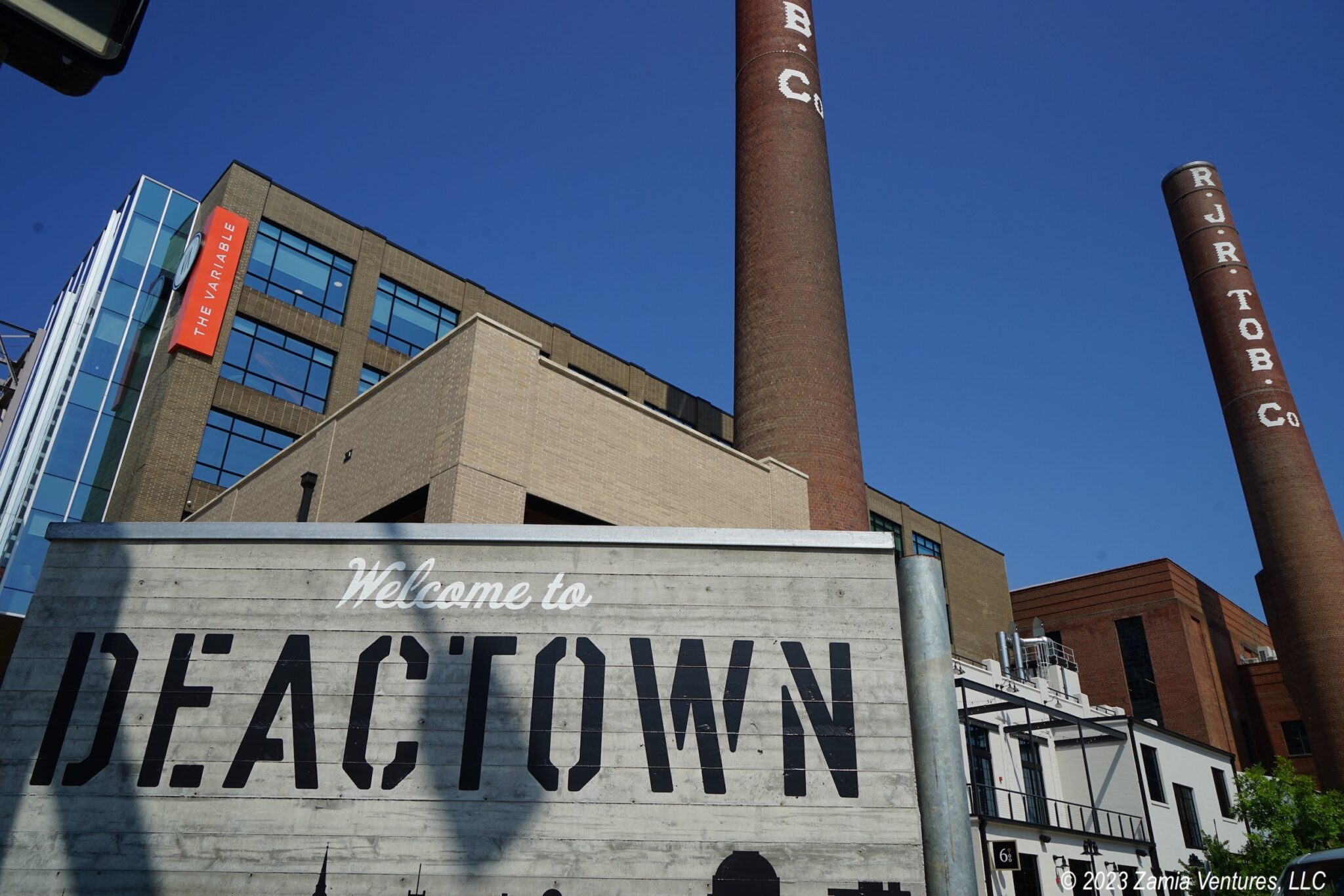
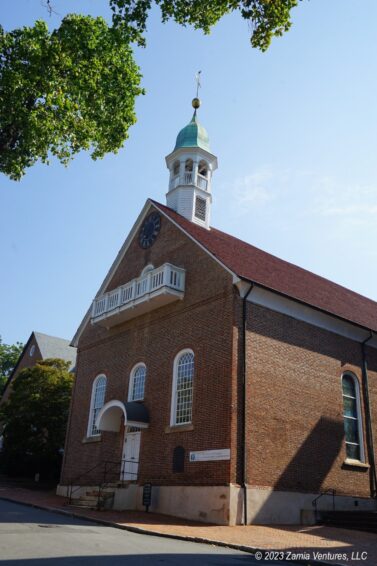
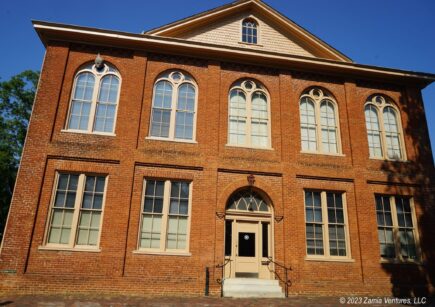

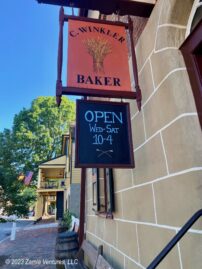
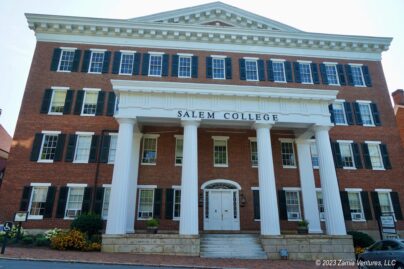
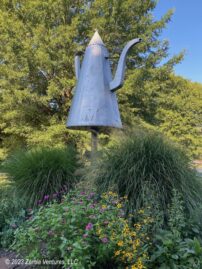
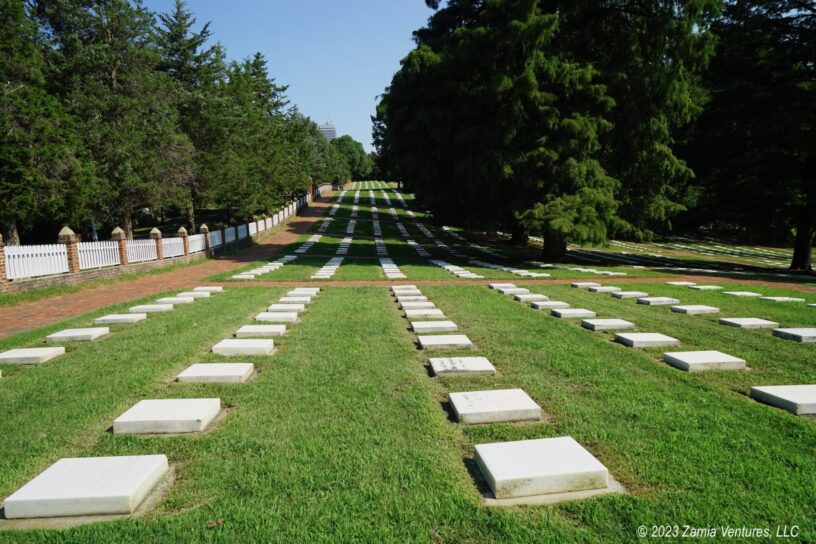
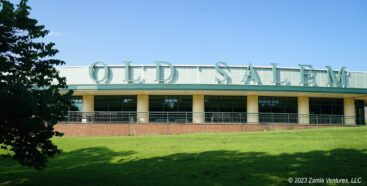
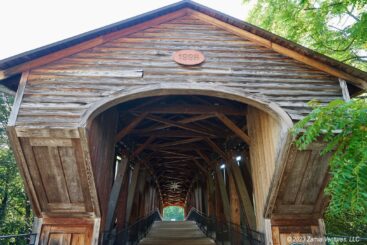
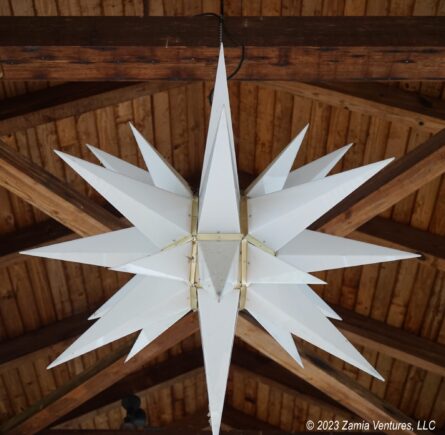
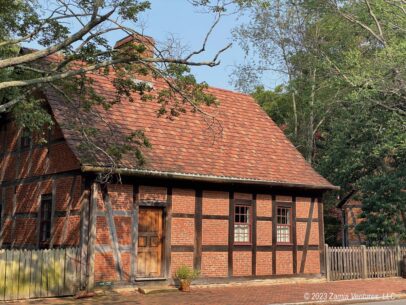
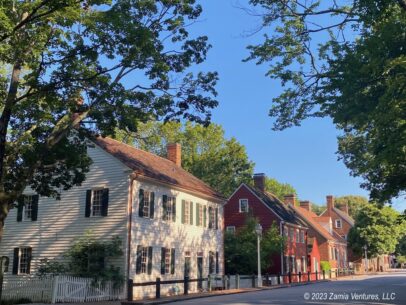
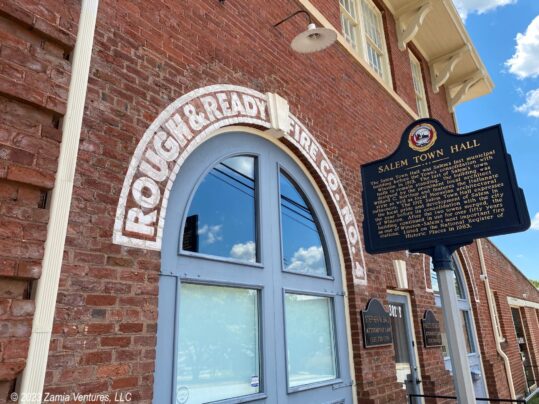
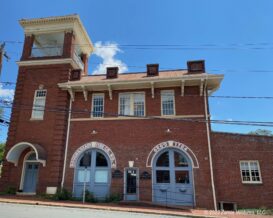
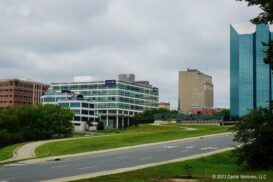
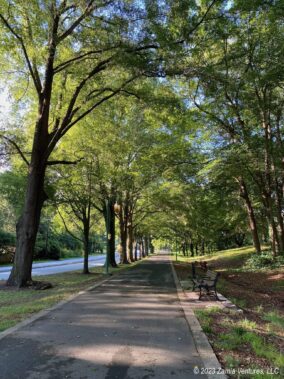
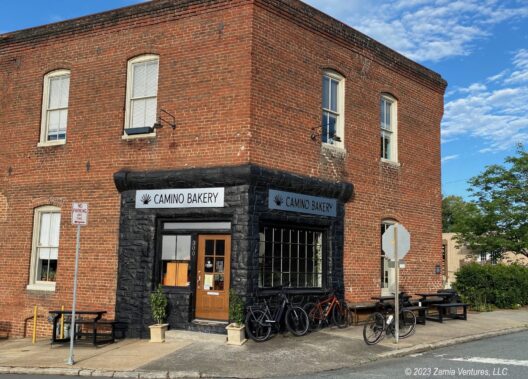
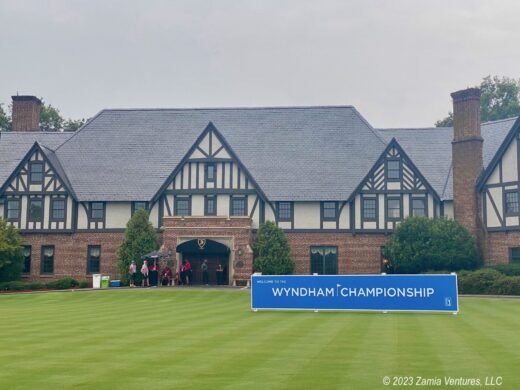
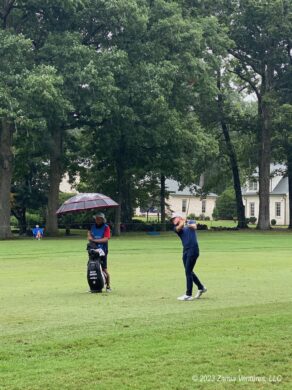
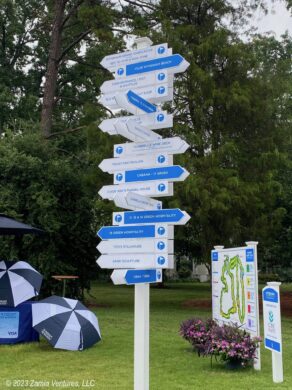
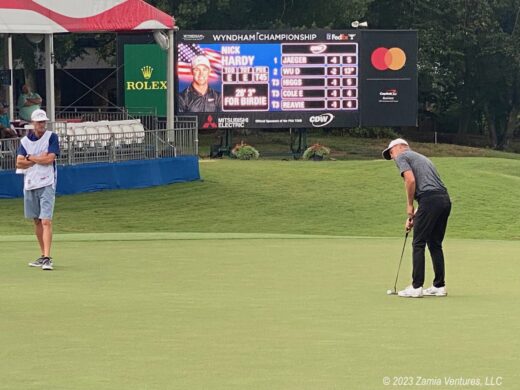
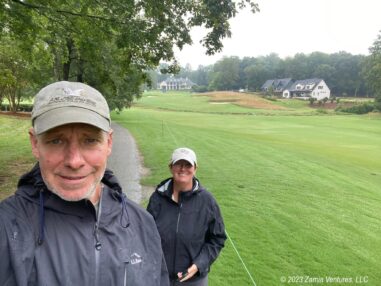

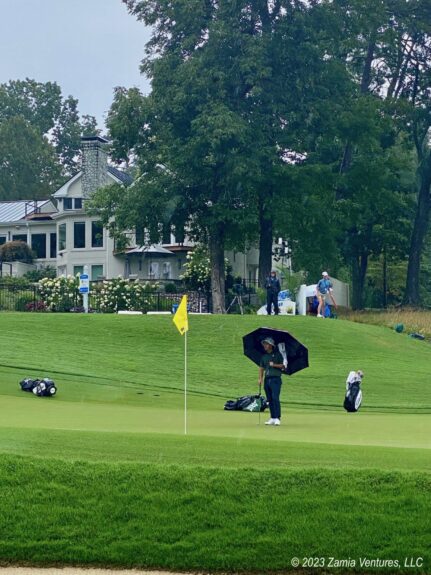
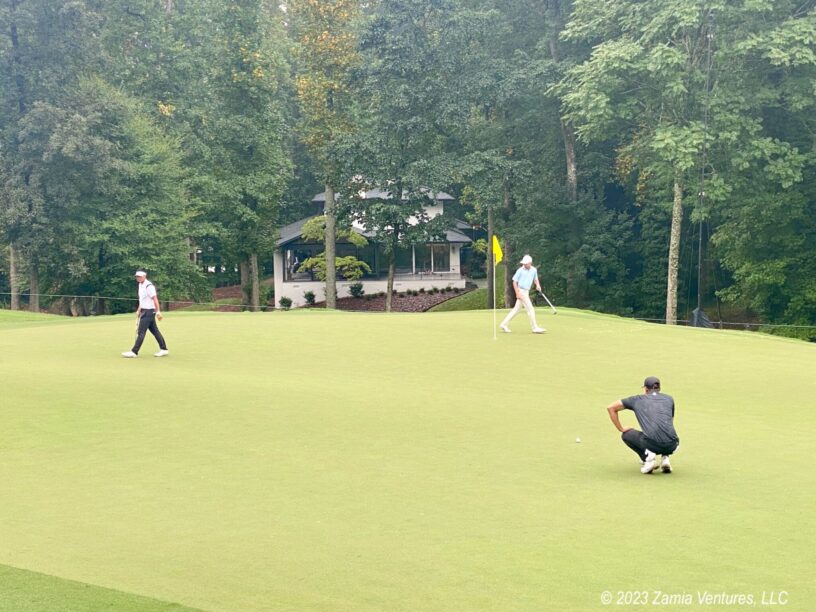
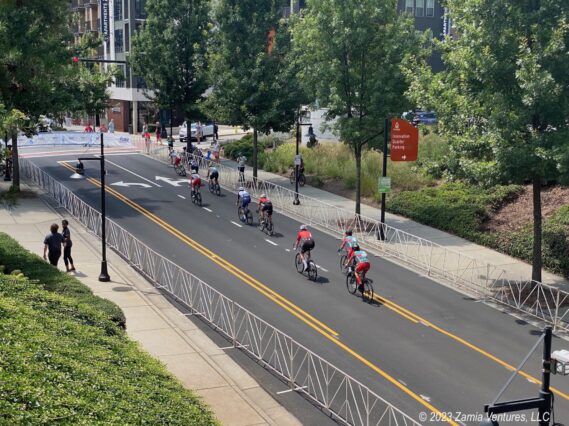
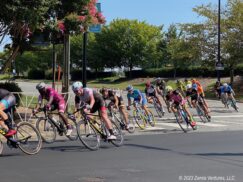
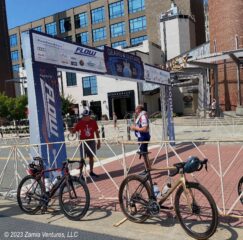
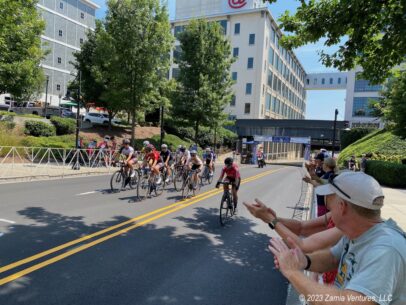
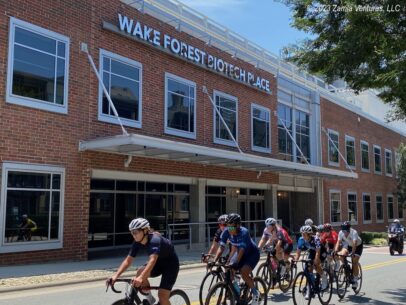
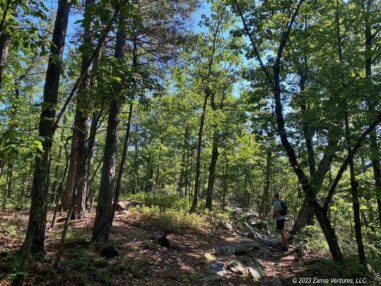
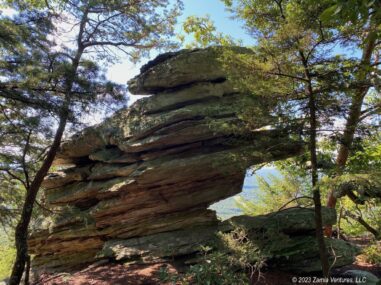
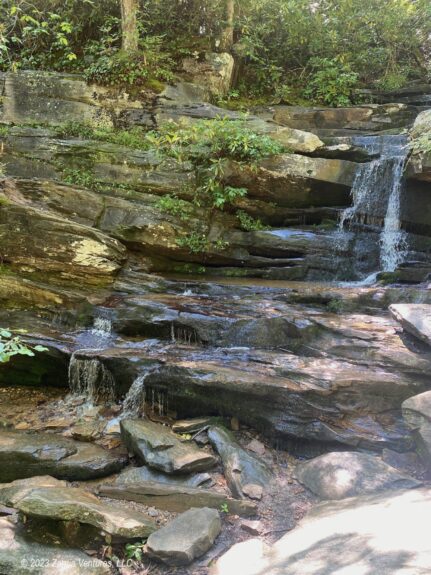
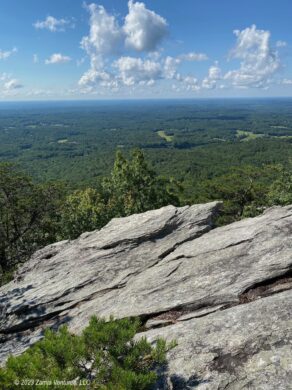
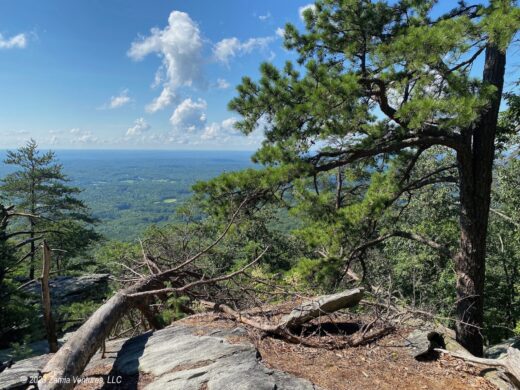
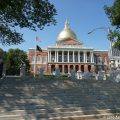
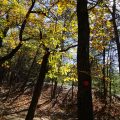
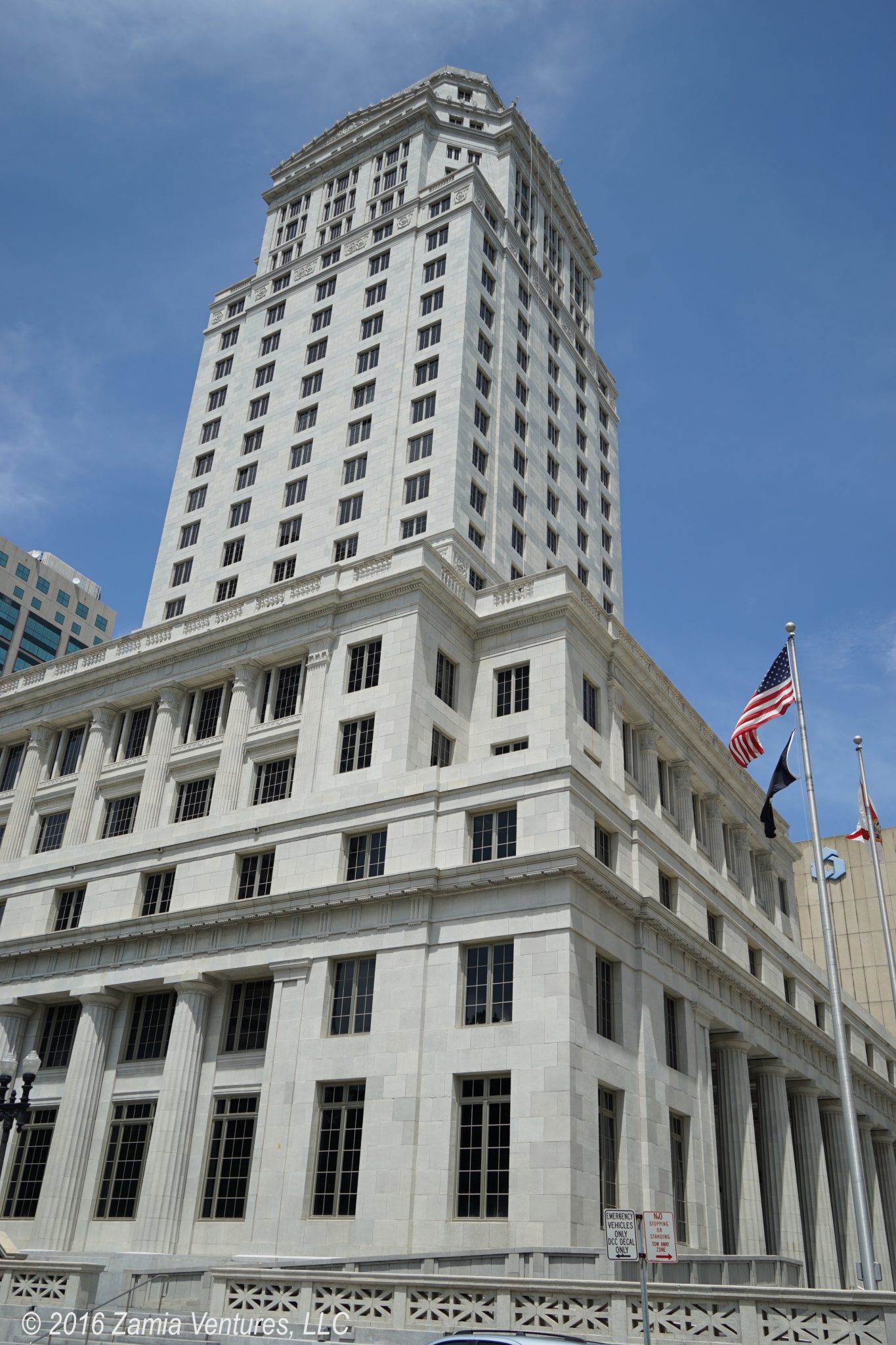
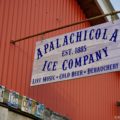
Looks like you found another winner with all the stuff and things you like the best! I’d like to see more of the inside of where you’re staying next time, pretty please. Like the plate you posted on IG, I think someone should still be using all that stuff in the museum 😂
It looks like our AirBnB place is coming off the market, so my link to the listing doesn’t work. I’ll pull the photos from the listing (which I can still see) and post them next week, OK? Also, let me tease another topic for next time. I think you are interested in the question of what items belong in a museum. We visited a contemporary art exhibit Sunday that left me reeling over the question, “Is that really art?” Preview of coming attractions!
Please add me to your distribution list. I look forward to reading your blogs. You did a wonderful job on the research of Winston-Salem. I hope you do take and include interior pictures of your rental or a link. The trips that I have made there where for specific reasons not as tourist. I love your post! I do have to write you about Sandy Mush. I have a preciously unknown connection to that area and I would never have known if you had not vacation there. The word Sandy Mush was not in my vocabulary.
Pat
Thanks for the kind comments. If you want to subscribe — you get an email notification of news posts — just enter your email address in the box on the right side of the screen that says “Subscribe here for email post notifications” and hit “subscribe.” You’ll get an email requesting confirmation and then you’ll be subscribed!
Any story that begins with a good old fashioned burning at the stake is a good one to me! Ahh, those were the days!
Just kidding. People are nuts. Always were, always will be.
In any case, looks like another fun town with lots of interesting options. I’ve never seen a golf game live, but always figured it would be pretty cool to see it in person. As you pointed out, there’s so much more to it than what you see on TV. I also think watching the cameramen do their work is cool. So much skill involved in capturing those shots, and so much coordination behind the scenes to show the right thing at the right time to a live audience. It’s truly a marvel.
Well, there’s nothing like a good martyrdom to keep your followers interested, that’s what I always say. I do find it interesting that Salem is this little pocket of German and Eastern European influence in a state that was overwhelmingly settled by people of English, Scottish, and Scots-Irish descent. And the transition of the Moravians from living in an Amish-like separate community to integration with non-Moravian neighbors is a process I find fascinating. Anyway, back here in the modern era I do recommend live golf as a spectator sport. Even if you don’t play golf (and I don’t), the courses are typically in a beautiful setting and make for a lovely and relaxing walk, plus the players are fun to watch in action. And you are 100% correct that in televised events watching the broadcast crews is half the fun!
Wow, you guys hit the ground running! You are having way too much fun and I am stuck in cabinet painting hell. Not fair. 😂😂 Seriously, I’m happy that you’re having such a great time. The art and architecture and history of that area is fascinating!
Your post sent me down several rabbit holes, including reading more about the Moravians, the Gears and Guitars event, and perusing the menu at the Camino Bakery. It looks like you scored another cool Airbnb. Is it a drawback to not have an outdoor private space, or does the short stroll to the bakery make up for it? 🙂
We had a busy first week to be sure — which we are making up for with a much quieter second week. I do wish we had a patio or balcony, but having a lot of pedestrian-friendly areas around us means that we are getting plenty of time outdoors. I mean, if our strolls end up passing by the bakery on the way home, that’s just good luck, right? Not conniving on my part, right? 🙂 I’m actually pleasantly surprised by how walkable the whole downtown area is, not just the Old Salem area. I guess I forgot what it’s like to have consistent, continuous sidewalks!
We’re definitely enjoying the many centuries of architecture here – we’ve discussed several times how Salem was particularly lucky in its timing, with the Moravian Church hanging on to its property just long enough for development pressure to move elsewhere. Otherwise, all these interesting colonial buildings would surely have been replaced by modern structures long ago.